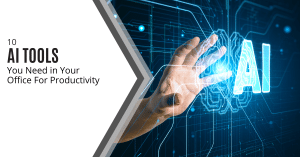Digital transformation in the Architecture, Engineering, and Construction (AEC) industry involves leveraging digital tools to enhance efficiency and innovation. It encompasses technologies like BIM, AI, and IoT to streamline processes and improve outcomes.
Digital transformation is revolutionizing the AEC industry by integrating advanced technologies into every phase of project development. Building Information Modeling (BIM) enables precise planning and visualization, reducing errors and costs. Artificial Intelligence (AI) enhances decision-making by predicting project risks and optimizing resource allocation.
The Internet of Things (IoT) connects various systems, improving real-time monitoring and maintenance. Embracing these technologies leads to faster project completion, better quality, and increased sustainability. Companies that adapt to digital transformation gain a competitive edge, ensuring long-term success in a rapidly evolving market.
Introduction To Digital Transformation
Digital transformation is revolutionizing every industry. The Architecture, Engineering, and Construction (AEC) industry is no exception. Let’s delve into what digital transformation means for the AEC sector.
What Is Digital Transformation?
Digital transformation involves integrating digital technology into all areas of a business. This significantly changes how you operate and deliver value to customers. In AEC, it encompasses the use of advanced software, tools, and technologies to improve project delivery and efficiency.
Here are some key components of digital transformation in AEC:
- Building Information Modeling (BIM)
- 3D Printing
- Augmented Reality (AR)
- Virtual Reality (VR)
- Internet of Things (IoT)
Importance In Aec Industry
The importance of digital transformation in AEC cannot be overstated. It offers numerous benefits:
| Benefit | Description |
|---|---|
| Increased Efficiency | Automation reduces manual tasks, speeding up processes. |
| Improved Collaboration | Digital tools enable better communication among team members. |
| Cost Savings | Efficient processes reduce wastage and save money. |
| Better Decision Making | Data-driven insights help in making informed decisions. |
To sum up, embracing digital transformation in AEC leads to more efficient, cost-effective, and collaborative projects.
Key Technologies
The AEC industry is embracing digital transformation. Key technologies are driving this change. These innovations are shaping the future of architecture, engineering, and construction. They enhance productivity, reduce costs, and improve project outcomes.
Building Information Modeling (bim)
Building Information Modeling (BIM) is a game-changer. BIM creates digital representations of buildings. These models are rich in data. They contain details on every aspect of the building.
BIM allows for better visualization. It helps stakeholders understand the project. This technology improves collaboration. All team members work on the same model.
BIM also supports clash detection. It identifies potential issues before construction begins. This reduces errors and rework. It saves time and money.
| Benefits of BIM | Details |
|---|---|
| Enhanced Visualization | 3D models offer a clear project view. |
| Improved Collaboration | All stakeholders share one model. |
| Clash Detection | Identifies issues before construction. |
| Cost Savings | Reduces errors and rework. |
Artificial Intelligence And Machine Learning
Artificial Intelligence (AI) and Machine Learning (ML) are transforming the AEC industry. These technologies automate tasks. They analyze vast amounts of data.
AI can predict project outcomes. It helps in planning and risk management. ML learns from past data. It improves predictions over time.
AI and ML also enhance safety. They monitor sites and predict hazards. This ensures a safer work environment.
- Task Automation: Reduces manual labor.
- Data Analysis: Provides valuable insights.
- Outcome Prediction: Helps in planning and risk management.
- Safety Improvement: Predicts hazards and enhances safety.
Impact On Design Processes
The digital transformation in the Architecture, Engineering, and Construction (AEC) industry has revolutionized design processes. This transformation impacts collaboration, accuracy, and efficiency. Let’s explore these changes.
Enhanced Collaboration
Digital tools foster better teamwork. Teams can now work together in real-time. This reduces delays and misunderstandings. Cloud-based platforms allow easy access to project files. Everyone stays updated with the latest versions.
- Real-time editing and sharing
- Centralized file storage
- Improved communication tools
Improved Accuracy
Digital tools increase design accuracy. Errors are minimized through automated checks. 3D modeling helps visualize designs better. It ensures all elements fit perfectly. This reduces the risk of costly mistakes.
| Tool | Benefit |
|---|---|
| 3D Modeling | Better visualization |
| Automated Checks | Reduced errors |
| Cloud Storage | Easy access |
Embracing digital transformation ensures higher quality designs. This leads to more successful projects.
Construction Innovations
Digital transformation in the AEC (Architecture, Engineering, and Construction) industry is reshaping how projects are planned and executed. Construction innovations are at the heart of this transformation, driving efficiency and productivity.
Automation And Robotics
Automation and robotics are revolutionizing construction sites. Robots can handle repetitive tasks with precision. This reduces human error and increases safety. Automated machinery speeds up processes and reduces labor costs.
For example, robotic bricklayers can lay bricks faster than humans. Drones are used for site inspections, providing real-time data. This helps in quick decision-making and reduces project delays.
Automation also includes software solutions for project management. These tools streamline workflows and improve communication among teams.
3d Printing
3D printing is another game-changer in construction. It allows for the creation of complex structures with ease. This technology reduces waste and lowers material costs.
3D printing can produce building components off-site. These components are then transported and assembled on-site. This method reduces construction time significantly.
One of the key benefits of 3D printing is customization. Architects can design unique structures without worrying about manufacturing limitations. This opens up new possibilities for creative and functional designs.
Here are some benefits of 3D printing in construction:
- Reduced material waste
- Lower labor costs
- Faster project completion
- High customization options
Operational Efficiency
The architecture, engineering, and construction (AEC) industry is evolving rapidly. Digital transformation is key to this change. Operational efficiency is a significant benefit of this transformation.
Data-driven Decision Making
Data is crucial in the AEC industry. Data-driven decision making enhances project outcomes. Digital tools collect and analyze data. This data helps in making informed decisions. For example, Building Information Modeling (BIM) allows accurate data collection. This leads to better project planning and execution.
Here are some key benefits of data-driven decision making:
- Improved accuracy in project estimates
- Enhanced project timelines
- Reduced risk of errors
- Better resource allocation
Cost Reduction
Cost is a major concern in the AEC industry. Digital transformation helps in cost reduction. Automated processes replace manual tasks. This reduces labor costs. Digital tools also minimize material waste. This saves money and resources.
Below is a table showing cost savings through digital transformation:
| Aspect | Traditional Cost | Digital Cost | Savings |
|---|---|---|---|
| Labor | $100,000 | $70,000 | $30,000 |
| Materials | $50,000 | $40,000 | $10,000 |
| Time | 6 months | 4 months | 2 months |
Digital transformation in the AEC industry leads to significant cost savings. This makes projects more affordable and efficient.
Challenges And Barriers
Digital transformation in the Architecture, Engineering, and Construction (AEC) industry offers many benefits. Yet, there are significant challenges and barriers that organizations must overcome. These include resistance to change and cybersecurity concerns.
Resistance To Change
Resistance to change is a major barrier in the AEC industry. Many professionals are used to traditional methods. They may find new technologies intimidating or unnecessary.
Change can disrupt established routines. Employees may fear job loss or skill redundancy. Training and education are crucial to overcoming this resistance.
- Traditional methods feel safer
- Fear of job loss
- Lack of training
Cybersecurity Concerns
Cybersecurity concerns are another significant challenge. Digital transformation involves data storage, cloud computing, and online collaboration. These advancements increase the risk of cyber threats.
Sensitive project data can become vulnerable. Protecting this data is essential. Implementing robust cybersecurity measures can help mitigate these risks.
| Concern | Impact |
|---|---|
| Data Breaches | Loss of sensitive information |
| Phishing Attacks | Compromised employee credentials |
| Ransomware | Disruption of operations |
Case Studies
Digital transformation is changing the Architecture, Engineering, and Construction (AEC) industry. Here, we explore some real-life case studies that highlight the benefits and challenges of digital transformation in AEC.
Successful Implementations
Many companies have successfully implemented digital solutions. These solutions have improved efficiency, reduced costs, and increased customer satisfaction.
| Company | Solution | Outcome |
|---|---|---|
| ABC Construction | Building Information Modeling (BIM) | Improved project accuracy by 30% |
| XYZ Engineering | Drone Technology | Reduced survey time by 50% |
| 123 Architecture | Cloud Collaboration | Enhanced team communication |
Lessons Learned
From these case studies, we can learn important lessons. Implementing digital solutions requires careful planning and execution.
- Stakeholder Involvement: Engage all stakeholders early in the process.
- Training: Ensure staff are properly trained on new technologies.
- Data Security: Protect sensitive project data with robust security measures.
- Scalability: Choose solutions that can grow with your company.
By following these lessons, companies can achieve a successful digital transformation. They can harness the full potential of digital technologies in the AEC industry.
Future Trends
The future of digital transformation in AEC (Architecture, Engineering, and Construction) promises exciting advancements. Emerging trends will shape the industry, making it more efficient and sustainable.
Sustainable Practices
Sustainable practices will drive future trends in the AEC industry. Companies will adopt eco-friendly materials and methods. These practices help reduce carbon footprints and save resources.
Here are some key sustainable practices:
- Using recycled materials
- Adopting energy-efficient designs
- Implementing green building certifications
Energy-efficient designs will help reduce energy consumption. Buildings will use smart systems to manage energy use. Green building certifications like LEED will become more popular.
Smart Cities
Smart cities represent a major trend in digital transformation. These cities use technology to improve the quality of life. They integrate various systems for better management.
Key features of smart cities include:
- Smart traffic systems
- Efficient waste management
- Advanced public transportation
Smart traffic systems help reduce congestion and pollution. Efficient waste management ensures cleaner and healthier environments. Advanced public transportation provides safer and quicker travel options.
These future trends in digital transformation will revolutionize the AEC industry. Embracing these trends ensures a sustainable and smart future for all.
Frequently Asked Questions
What Is Digital Transformation In Aec?
Digital transformation in AEC involves integrating digital technologies into architecture, engineering, and construction processes. It aims to improve efficiency, collaboration, and innovation.
Why Is Digital Transformation Important In Aec?
Digital transformation is crucial in AEC for enhancing productivity, reducing errors, and enabling better project management. It also fosters sustainable building practices.
How Does Bim Contribute To Digital Transformation?
Building Information Modeling (BIM) plays a key role in digital transformation by providing detailed digital representations of buildings. It enhances collaboration and reduces project costs.
What Are The Benefits Of Digital Tools In Aec?
Digital tools in AEC streamline workflows, improve accuracy, and enable real-time collaboration. They also support data-driven decision-making and project tracking.
Conclusion
Embracing digital transformation in AEC leads to streamlined processes and improved project outcomes. Adopting advanced technologies can enhance collaboration and efficiency. Stay ahead by integrating digital tools and techniques. The future of AEC lies in continuous innovation and adaptability. Transform your approach today and reap the benefits of a digitalized industry.








